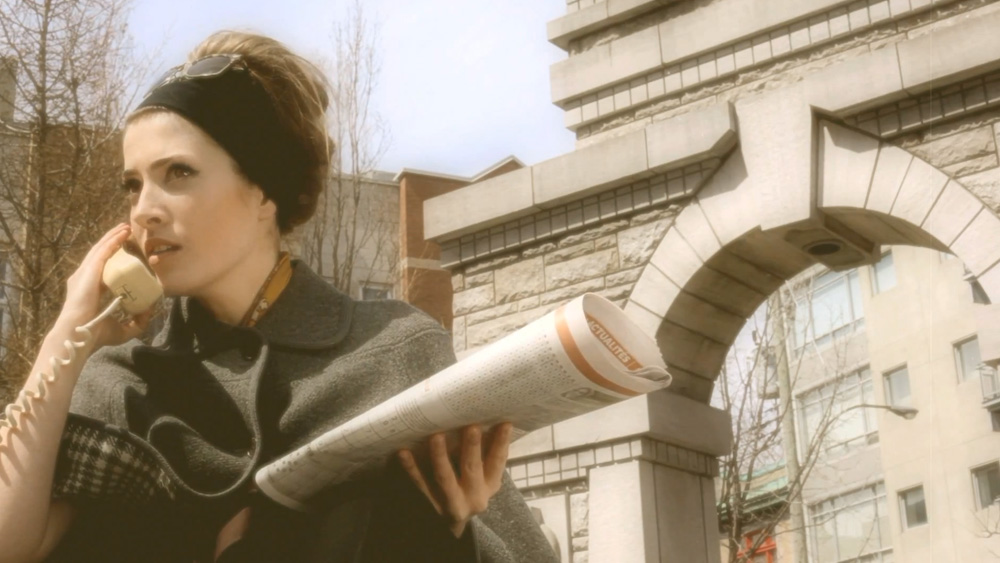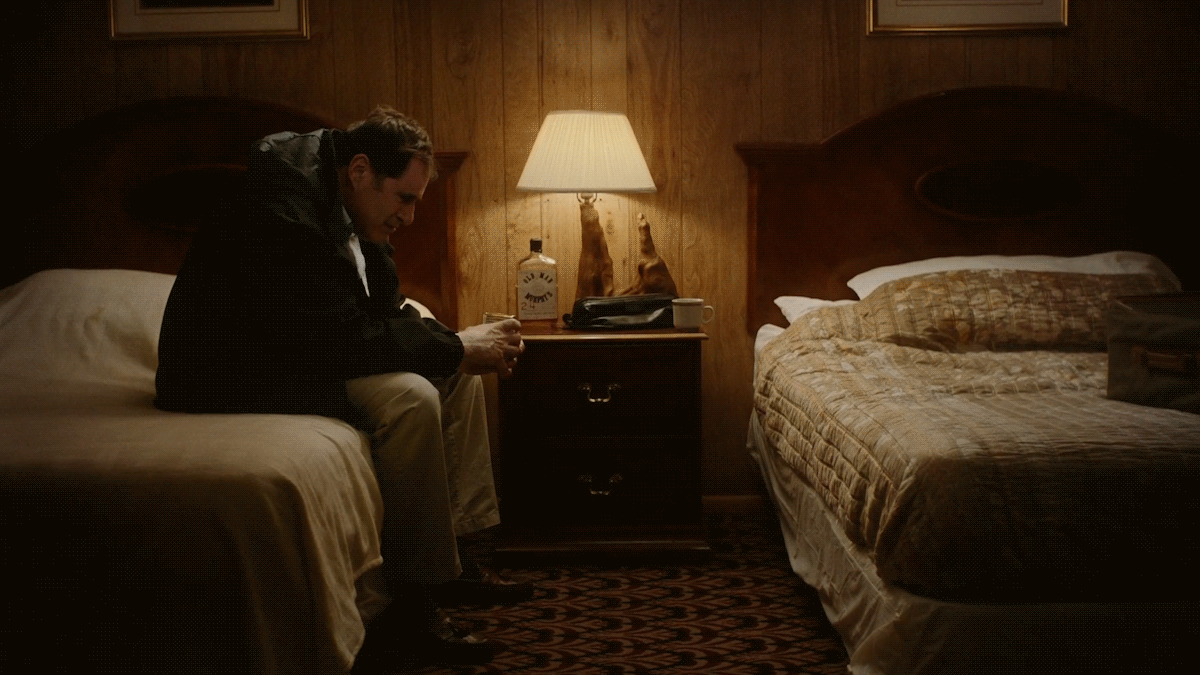The Waltz tells about an invisible connection with a departed loved one and the mystical possibility of soul reincarnation.
Director Lado Kvataniya is a storyteller who thrives on metaphors, conveniently finding his niche in creating music videos with an accent on cinematography. His last video for ‘Monetochka – Burn‘ was just featured on Film Shortage. ‘The Waltz’, a music video created for Georgian band Mgzavrebi, tells a story about an invisible connection with a departed loved one and the mystical possibility of soul reincarnation. The main character experiences the loss of his mother, but she comes to him in her new incarnation. The film takes an unusual pace and tone as we weave through moments of different eras, leaving us with gorgeous photography and lasting momentos tuned to the wonderful soundtrack. We asked Lado a few questions about the film and its production:
Can you tell us what inspired you to bring this story to life?
I am an ethnic Georgian, so I always wanted to collaborate with Georgian artists. Three years ago, Gigi Dedalamazishvil, the band leader of Mgzavrebi, wrote me an offer to work together. We met in person in January 2022 in Tbilisi at a private screening of my film “The Execution”. Gigi sent me “Waltz”. This is a song about his the first feeling of losing a loved one. He tried to express the feelings that he encountered at the age of 16-17 when his grandmother died. After listening to the track, but not knowing the meaning of the lyrics in Georgian, I wrote a script, which completely coincides with the message of “Waltz”. I spent my childhood in a Georgian village, influenced by certain context and traditions. It was important for me to take a journey into the past in order to understand my identity and, above all, to have an internal talk with my departed loved ones. I wanted to imagine how and where relatives who are no longer around live, to see them and to know that they are good now. This is such a kaleidoscope in my mind, fragments of the warmest memories from childhood in Georgia: our hazel tree groves; a pond where we fished never seems to be empty; an old aluminum washbasin in the yard, filled with ice water in the morning. This is a time for me in which it is safe and happy. From such precious fragments, a feeling of inner warmth is formed, which is always by your side when you turn to these memories. The song itself contains the tune of a lullaby that Gigi’s grandmother sang him as a child.
How did you tie in the different locations and eras to a particular style?
16mm film as a tool was a conscious decision. We had a specific task – to visually distinguish between the two worlds. We divided the production period into two parts – a documentary and an acting.
The first thing I needed to get a chronicle footage as a metaphor for the world in which the departed live. We used a Bolex camera from the 60’s, the footage from which resembles an archived newsreel, even though all of the footage was completely filmed by me during a week in September in the high-mountain villages Racha and Bakhmaro. It’s a miracle that we managed to capture this fragile timelessness. When we watched the rough cut, we saw with our eyes the very world of the departed loved ones. And then we started filming a colored acting part in Tbilisi. It was filmed on Arriflex wich gives a completely different plasticity of the footage, it is more smooth and clear. This allows the entire unique Georgian texture to fully open up.
Speaking of casting, our three main characters are professional actors, but all the rest are not. It was important to carefully fill our universe with living, expressive people, who will not act, but naturally exist in the film frame. There were also constraintions by the work of the production designer when searching for locations, selecting props. It was important to rely on the beauty and integrity of existing objects and things.
It was important for me to find the edge between documentary wich organically coexists with minimal staging, so as a director, i would not be seen.
What was the most challenging scene for you to film?
A year ago, at 27 January, 2022, me and Gigi went location scouting for the first time in Bakhmaro. It is a mountainous village about 5 hours drive from Tbilisi. We began to climb the mountains when the snowfall began. Despite the difficulties, we reached the village. We managed to see houses covered with snow up to the roofs, but we realized that we had found the very place. Meanwhile, a terrible snow storm began, we were lucky not to stay in the mountains and return safe and sound. Exactly 9 months later, on 27 October, 2022, we wound up shooting “Waltz” by the filming the birth of a child. It turns out that while in January Gigi and I picked mountain locations, the future protagonist of our story was conceived somewhere in Tbilisi. There were three of us on the set in the labor ward: me, director of photography Andrey Krauzov, and a camera mechanic. The morning before we joked about which one of us would faint first. But when the сhilbirth began, we were shocked by the process of the emergence of a new human being. We froze speechless and breathless. The first movements of a person, a first glance, a cry – such a fragile miracle of human life.
Do you have any tips or advice to offer fellow filmmakers?
It doesn’t matter what point you are in – an established filmmaker or a beginner, it is important to work is a direct reflection of your attitude and experiences. First of all you have to be attentive to your feelings and use yourself as source material.
By using all the known dramaturgical constructions or attractive textbook plots from the world of cinema, you unconscious can do something what has already been shown and seen before. And i’ve been there few times by myself. But in this way the identity of both yours and the story you are making is lost. And the product becomes something so average, something already repeatedly seen.
To search for original ideas, I prefer to look inside myself. And every year, with every new experience gained, convert it into an unique artistic space for the new story to unfold. You can find metaphorical figurative solutions that will maximally reflect the meanings that you originally formulated and laid down. And, even disguised in a metaphor, they will sound confidently and strong, because they are born from your own unique experiences and feelings.
What do you hope people will take away from Waltz?
I see the world rather pessimistically. The aesthetics of darkness and hopelessness are close to me. But this year I denied myself this opportunity, I wanted to find the inner light. Exactly the light – saving, healing, vital – became the most necessary nowadays. And when I first watched the final cut, not as a director but as a spectator, i get the feeling of purification. And, I will not hide, I shed a tear. It means much to me that I am not the only one who has such a reaction, but watching “Waltz” also evokes similar emotions in our viewers audience.
Since the release of “Waltz”, we have received a lot of warm feedback in public. Sometimes their sincerity is absolutely striking. In the comments and posts people share their deep personal experiences. Many of them write that dedicates our “Waltz” to their own departed loved ones, share their personal stories. Another precious note, that when we sent “Waltz” to our first viewers – friends and relatives – to share the release, through time people often sent back just a selfie or a silent video with tearful eyes. An amazing moment of togetherness is unforgettable and breathtaking.
It’s not about the tears by itself, it’s about the feeling of inner light and purification they experience when they look at film. And this is the most important, because when, if not now, we need this salvation.
Which films you can say directly inspired this film?
In addition to the desire to imagine where departed loved ones might be, Georgian cinema and its bright representatives, such as Georgiy Daneliya, Tengiz Abuladze, Sergey Parajanov, served as a great source of inspiration. These are great Georgian film directors who greatly influenced my perception of cinema. I would highly recommend you to watch such films as “The Color of Pomegranate” by Sergey Parajanov, “Passport” by Georgiy Daneliya, “Repentance” by Tengiz Abuladze – these are one of my favorite films. All these creators incredibly love their protagonists, empathize and sympathize with them – no matter how fools, scoundrels, insignificance or ridiculous they can be sometimes. These authors always found beauty in their characters, aestheticized them either in some of their weakness or manifestations of stupidity. Now matter what, as a viewer, you still empathize with them and forgive them — because of initially love of their creators. This is probably main thing what these great Georgian filmmakers taught me.
There is also the greatest director Mikhail Kalatozov, whom the whole world knows from the military drama “The Cranes Are Flying”, the only Soviet feature film that won the Grand Prix at the Cannes Film Festival in 1958. Thanks to this film, the world will not forget the name of Kalatozov, but few people know that his real last name is Kalatozishvili – he is Georgian by birth. So Kalatozov has a wonderful film “The Salt of Svaneti” (1939), a documentary that tells about the life of the Svan community named Ushkuli, located in the upper reaches of the Inguri River. This is such a graphic, black-and-white film, which, among other, aesthetically influenced the creation of “Waltz”.





